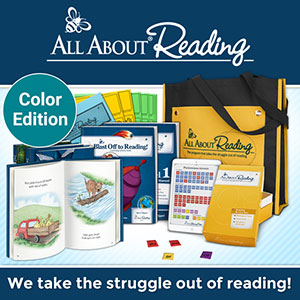Want to introduce letters and letter sounds in a fun and hands-on way? Try using Letter Sensory Bins!
But wait, you may be wondering if I mean introducing letter names or letter sounds. Well, I mean both, at the same time. I have never been one to separate the two components of a letter, and I don't think it serves children well either. Learning just letter names does not give kids any functionality to the learning, and learning just sounds seems like it would be confusing when they begin writing since you don't tell them to write an /a/ but instead to write an A.
I've also never been hung up on teaching lowercase or uppercase first. I try to expose them to both at the same time, but I guess I am a little nontraditional. I do like the the points mentioned in this article by This Reading Mama if you want more information on introducing letters.
Sensory bins are great for kids that love exploring things with multiple senses but especially with their hands. They usually contain a filler and a variety of themed toys.
For the letter bins, I basically omitted the filler except for a few instances when the filler started with the appropriate letter. This should be great news for those that dread bins filled with rice or oatmeal or some other mess inducing substance. The letter bins I created for my son included a variety of textures as well as an audio component.
Supplies to Create Letter Sensory Bins:
How to Introduce Letters and Letter Sounds to Toddlers and Preschoolers
But wait, you may be wondering if I mean introducing letter names or letter sounds. Well, I mean both, at the same time. I have never been one to separate the two components of a letter, and I don't think it serves children well either. Learning just letter names does not give kids any functionality to the learning, and learning just sounds seems like it would be confusing when they begin writing since you don't tell them to write an /a/ but instead to write an A.
I've also never been hung up on teaching lowercase or uppercase first. I try to expose them to both at the same time, but I guess I am a little nontraditional. I do like the the points mentioned in this article by This Reading Mama if you want more information on introducing letters.
Why Use Sensory Bins for Letter Learning
Sensory bins are great for kids that love exploring things with multiple senses but especially with their hands. They usually contain a filler and a variety of themed toys.
For the letter bins, I basically omitted the filler except for a few instances when the filler started with the appropriate letter. This should be great news for those that dread bins filled with rice or oatmeal or some other mess inducing substance. The letter bins I created for my son included a variety of textures as well as an audio component.
Supplies to Create Letter Sensory Bins:
- Singing Letter Magnet (like this one)
- Foam Letters (like these and these)
- Various toys or other materials that start with each letter (I used lots of stuffed toys, other small toys, random things around the house, and toobs)
- I loved including these letter books too, but they don't seem widely available anymore. These may work too, but I haven't seen them in person.
To assemble the bins you will need a singing magnet and lots of foam letters in various sizes as well as a variety of items that start with that letter. These can include small toys (toy cars, toob pieces), stuffed toys, pieces of toys (a duplo brick, a puzzle piece), articles of clothing (vest, shoe), and things around the house (dishes, crayons). I really do love including a book about the letter as well, so if you have them available be sure to stick that in.
Now don't gather all the supplies for all the bins right away; you don't want to overwhelm the child. I tried to introduce a new letter once a week with the bin available all week for him to explore.
Arrange the items for your current letter in a visually appealing way, and present it to the child. Be sure to tell the child the letter and the sound it makes. Go through the bin and tell them what each item is, especially if it is something they may not have encountered, emphasis the starting sound or say something like "A is for____." Play the magnet with them the first few times, so they can hear what it is singing clearly (for some reason they always sound a bit muddled to me). Read the book if you have one. Then let them explore everything in it.
The next day, review the letter name and sound and reread the book. I would repeat daily followed by letting them play with the contents for at least a week before switching letters. Of course this depends on the child as well; some will remain interested in the same bin much longer and others not as long.
Now just move on to another letter repeating the same process.
Need ideas of what to include or how to set up the Letter Sensory Bins; each of ours is linked below!
Once your child has learned all the letters and letter sounds you can do a quick, hands-on review with this Alphabet Search Sensory Bin (sorry this one has rice; make sure you put down a tablecloth).
Even if your child already knows the alphabet song, this is still a great way to explore individual letters with their sounds. Honestly, it is a fun way to review them for the child that has already been taught letter names and sounds too.








.jpg)
.jpg)










